Location Intelligence: The key to sustained retail success
If you’re in retail, you probably already collect data. Lots of it. You want to know who your customers are, what they buy, how often they buy and where they come from. You also need to manage your products, stock levels – on the shop floor and in the warehouse – and relationships with your suppliers. And, of course, store performance – which are your best performing stores, staff, regions and product types or categories by store and region? The list is almost limitless.
So, you have a lot of data. But data on its own is worthless. What do you do with it? How do you explore your different data types, sets and share it with those who matter most – your decision-makers and stakeholders – to gain new insights and discover previously hidden opportunities?
You need to be able to map your location-based data. You need Location Intelligence (LI) – over 80 percent of your data has a spatial element, according to global analyst and advisory firm IDC. But what’s LI, and what’s it got to do with you, your business and your data?
Well, LI enables you to apply geographic contexts to business data – LI combines location-based data with traditional metrics captured within a Business Intelligence (BI) system. It helps solve business problems by providing context to business data. LI also enables you to see, understand and act on new business opportunities by uncovering previously unidentified patterns in your data, or crucial relationships between different data sources and types.
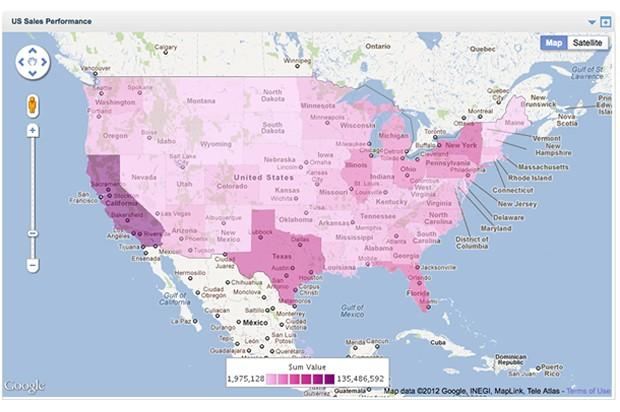
Or, as IDC put it: “Location intelligence is defined as the capacity to organize and understand complex data through the use of geographic relationships. LI organizes business and geographically referenced data to reveal the relationship of location to people, events, transactions, facilities, and assets.”
8 ways Location Intelligence can empower retailers to achieve competitive advantage
You’re an area manager for retail conglomerate Mega Store. The northern sector of your region is underperforming. The situation demands your personal attention. All options must be considered – including store closures or relocations.

The ability to understand the “where” of your retail data – not just that “what”, “how”, “when” and “why” – gives you capacity to develop ultra-effective marketing and operational strategies via multi-layered maps. And, applying LI to logistical data enables you to unite customers, suppliers and infrastructure, to ensure the most effective use of resources.
Using LI to understand your location-based information, you’re able to:
But strangely, despite the plethora of potential LI applications within the retail industry, retailers are falling behind when it comes to LI adoption.
Retailers wasting data, missing opportunities
According to recent research by Vanson Bourne and Google’s Enterprise division, the retail industry lags behind many other sectors in its adoption of enterprise mapping technologies, with only 46 percent of retailers currently utilizing mapping tools to visualize their data.
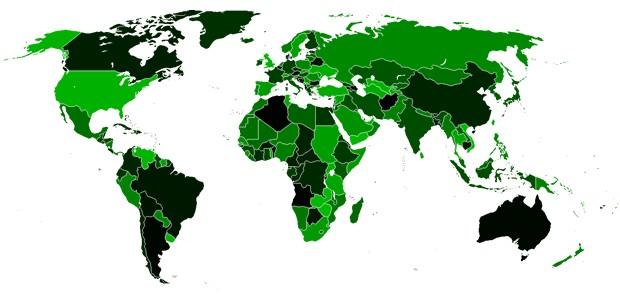
The survey defined “mapping technology” as technology that can be used by companies to present geographical information regarding the business to customers and/or staff.
“We live in an increasingly visual age and people expect to be able to digest information quickly rather than spending time trying to decipher it,” said Head of Enterprise GEO - EMEA at Google, Sanjay Patel. “It’s important that marketers are aware of the potential of mapping technology to help them visualize their data within a geographical context. Mapping technologies are being used for far more than just showing your customers where you’re located.”
Early adopters reaping the benefits of location-aware reporting
The September 2011 Vanson Bourne study of 250 marketing managers – from across a number of countries – found that those retailers already using the technology had experienced improved customer engagement (66%), increased Web traffic (49%) and higher sales (47%). Sixty-two percent of those early adopters within the retail industry also said that the information gleaned from the technology had forced them to reconsider their product strategy.
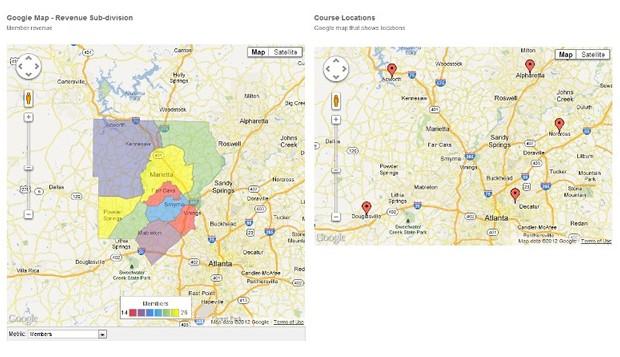
Other major benefits listed by respondents included increased productivity, the ability to map the flow of stock orders, attract more customers, drive brand loyalty, analyze trends regarding product selection and customer location, and generate highly targeted location-based marketing campaigns.
Laggards realize paybacks, playing catch-up
Perhaps it’s no wonder then that all of the 54 percent of retail respondents not currently utilizing technologies to map their organizational data said that they planned on implementing such capabilities within the next year.
“We have a saying in the geography world which is that data is king,” said Patel. “Data is the most valuable asset that any company has. If you open up that data and make it available to the end user – whether that end user is a consumer or a business – you as a company begin to progress.”
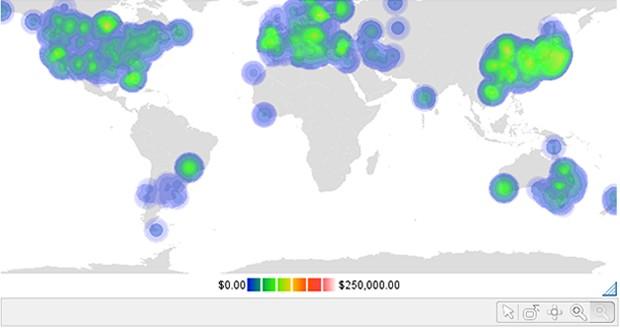
Ninety percent of all survey participants from a wide range of industries – including the transport, finance, retail and public sectors – said that they are using, or planning to implement, geospatial technologies to underpin strategic decision-making and achieve competitive advantage during 2012.
“Organizations in all sectors are harnessing the power of mapping technologies to get a better view of their customers, improve business processes, and most importantly of all, drive sales,” said Patel.
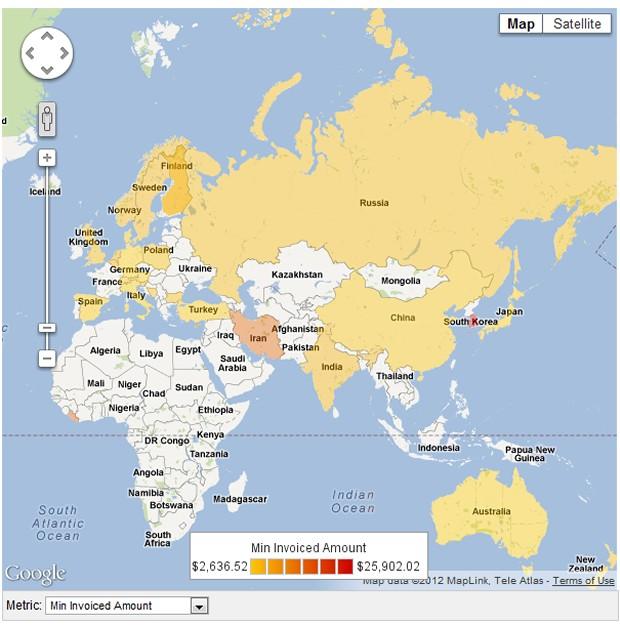
The global GIS market will reach $10.6bn by 2015, according to Global Industry Analysts Inc.
Lack of awareness a barrier to LI adoption
In fact (as mentioned in our previous blog post Experts: Location Intelligence unlocks the power of your data), only 11 percent of 180 business and IT managers interviewed for TechTarget’s 2012 Revealing the ‘Where’ of Business Intelligence using Location Analytics report were even familiar with the term ‘Location Intelligence’. The same report also revealed that only 13 percent of organizations had a data-mapping tool within their BI solution. And, whilst familiarity with location-aware analytics remains low, demand for its benefits is ironically high, with 75 percent of respondents from the same survey stating that it’s ‘somewhat important’ or ‘very important’ to utilize maps to view business data such as store locations, distribution networks, sales territories, revenue by region and competitor locations.

To further emphasize this point, Gartner’s 2012 BI Magic Quadrant survey revealed that many organizations, across a diverse range of industries, are beginning to apply BI and analytics to new business areas. As a result, respondents listed “geographic-intelligent functions” as the standout new product requirement for 2012.
Where to next?
As a retailer, LI offers you the ability to discover fresh insights and new relationships within and between your most important information – your sales, marketing, operations, CRM, finance, HR and procurement data – and to analyze and compare crucial business dimensions such as product, region, store, customer, department, supply chain, risk management; and of course, location.
Merging your location-based and traditional BI information provides context to your business data and enables you to see new opportunities.
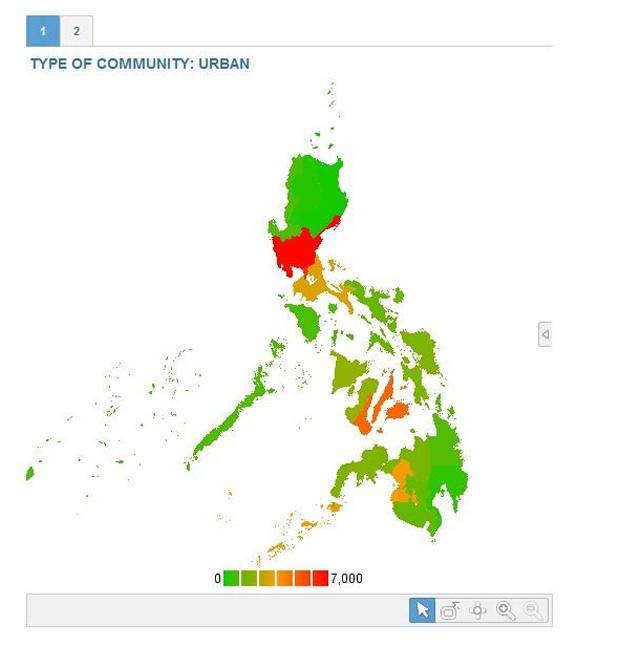
So register for our Webinar event – Location Intelligence Best Practices – and learn how to harness advanced mapping capabilities to advantage your organization by effectively aligning business development and strategy.
REGISTER NOW >
Let Yellowfin show you how to remove investment risk and outline strategies that allow you to continue to grow with confidence. Let Yellowfin show you how LI can increase your profits and assist you to realize sustained competitive advantage.
What the experts say
But it’s not just us pushing the potential benefits of LI. The globe’s most respected and revered enterprise IT research and advisory analysts also know the power of LI:
So, you have a lot of data. But data on its own is worthless. What do you do with it? How do you explore your different data types, sets and share it with those who matter most – your decision-makers and stakeholders – to gain new insights and discover previously hidden opportunities?
You need to be able to map your location-based data. You need Location Intelligence (LI) – over 80 percent of your data has a spatial element, according to global analyst and advisory firm IDC. But what’s LI, and what’s it got to do with you, your business and your data?
Well, LI enables you to apply geographic contexts to business data – LI combines location-based data with traditional metrics captured within a Business Intelligence (BI) system. It helps solve business problems by providing context to business data. LI also enables you to see, understand and act on new business opportunities by uncovering previously unidentified patterns in your data, or crucial relationships between different data sources and types.

Or, as IDC put it: “Location intelligence is defined as the capacity to organize and understand complex data through the use of geographic relationships. LI organizes business and geographically referenced data to reveal the relationship of location to people, events, transactions, facilities, and assets.”
8 ways Location Intelligence can empower retailers to achieve competitive advantage
You’re an area manager for retail conglomerate Mega Store. The northern sector of your region is underperforming. The situation demands your personal attention. All options must be considered – including store closures or relocations.

The ability to understand the “where” of your retail data – not just that “what”, “how”, “when” and “why” – gives you capacity to develop ultra-effective marketing and operational strategies via multi-layered maps. And, applying LI to logistical data enables you to unite customers, suppliers and infrastructure, to ensure the most effective use of resources.
Using LI to understand your location-based information, you’re able to:
- Uncover relationships between stores, products and customer types that affect sales performance
- Identify marketplace gaps, opportunities, threats and level of market penetration or saturation (by adding in an element of time, it is also possible to track and predict growth and changes in customer preferences, behavior and demography per region)
- Assess the sales of particular items by store and region to underpin future planning, determine effective and efficient sales campaigns and stock distribution strategies
- Track stock levels of individual retail operators to help coordinate warehouse deliveries to ensure individual shop fronts are always well stocked
- Assess customer purchase habits, frequency and residency to help new marketing campaigns boost store traffic and sales
- Segment customers in a multi-dimensional way via purchase history, demography as well as location, to develop highly effective and personalized relationships
- Identify the location of customers, as well as potential customers, and target them with specialized marketing messages via location-specific mediums
- Analyze location-based marketing metrics to develop lucrative and sustainable customer loyalty programs
- Maximize market share and individual store performance
- Detect and mitigate unnecessary competition between company stores
- Forecast and redevelop store-specific budgets and expectations based on the size of surrounding populations and other location specific information
- Select site locations for new outlets or warehouses based on the geographic spread of your most profitable customers, proximity of competing stores, public transport and general transport routes, and how the local populous compares to your ideal customer profile
- Detect and categorize underperforming stores to assess their ongoing viability, ability to raise profits, and develop strategies for rectifying the situation
But strangely, despite the plethora of potential LI applications within the retail industry, retailers are falling behind when it comes to LI adoption.
Retailers wasting data, missing opportunities
According to recent research by Vanson Bourne and Google’s Enterprise division, the retail industry lags behind many other sectors in its adoption of enterprise mapping technologies, with only 46 percent of retailers currently utilizing mapping tools to visualize their data.

The survey defined “mapping technology” as technology that can be used by companies to present geographical information regarding the business to customers and/or staff.
“We live in an increasingly visual age and people expect to be able to digest information quickly rather than spending time trying to decipher it,” said Head of Enterprise GEO - EMEA at Google, Sanjay Patel. “It’s important that marketers are aware of the potential of mapping technology to help them visualize their data within a geographical context. Mapping technologies are being used for far more than just showing your customers where you’re located.”
Early adopters reaping the benefits of location-aware reporting
The September 2011 Vanson Bourne study of 250 marketing managers – from across a number of countries – found that those retailers already using the technology had experienced improved customer engagement (66%), increased Web traffic (49%) and higher sales (47%). Sixty-two percent of those early adopters within the retail industry also said that the information gleaned from the technology had forced them to reconsider their product strategy.

Other major benefits listed by respondents included increased productivity, the ability to map the flow of stock orders, attract more customers, drive brand loyalty, analyze trends regarding product selection and customer location, and generate highly targeted location-based marketing campaigns.
Laggards realize paybacks, playing catch-up
Perhaps it’s no wonder then that all of the 54 percent of retail respondents not currently utilizing technologies to map their organizational data said that they planned on implementing such capabilities within the next year.
“We have a saying in the geography world which is that data is king,” said Patel. “Data is the most valuable asset that any company has. If you open up that data and make it available to the end user – whether that end user is a consumer or a business – you as a company begin to progress.”

Ninety percent of all survey participants from a wide range of industries – including the transport, finance, retail and public sectors – said that they are using, or planning to implement, geospatial technologies to underpin strategic decision-making and achieve competitive advantage during 2012.
“Organizations in all sectors are harnessing the power of mapping technologies to get a better view of their customers, improve business processes, and most importantly of all, drive sales,” said Patel.

The global GIS market will reach $10.6bn by 2015, according to Global Industry Analysts Inc.
Lack of awareness a barrier to LI adoption
In fact (as mentioned in our previous blog post Experts: Location Intelligence unlocks the power of your data), only 11 percent of 180 business and IT managers interviewed for TechTarget’s 2012 Revealing the ‘Where’ of Business Intelligence using Location Analytics report were even familiar with the term ‘Location Intelligence’. The same report also revealed that only 13 percent of organizations had a data-mapping tool within their BI solution. And, whilst familiarity with location-aware analytics remains low, demand for its benefits is ironically high, with 75 percent of respondents from the same survey stating that it’s ‘somewhat important’ or ‘very important’ to utilize maps to view business data such as store locations, distribution networks, sales territories, revenue by region and competitor locations.

To further emphasize this point, Gartner’s 2012 BI Magic Quadrant survey revealed that many organizations, across a diverse range of industries, are beginning to apply BI and analytics to new business areas. As a result, respondents listed “geographic-intelligent functions” as the standout new product requirement for 2012.
Where to next?
As a retailer, LI offers you the ability to discover fresh insights and new relationships within and between your most important information – your sales, marketing, operations, CRM, finance, HR and procurement data – and to analyze and compare crucial business dimensions such as product, region, store, customer, department, supply chain, risk management; and of course, location.
Merging your location-based and traditional BI information provides context to your business data and enables you to see new opportunities.

So register for our Webinar event – Location Intelligence Best Practices – and learn how to harness advanced mapping capabilities to advantage your organization by effectively aligning business development and strategy.
REGISTER NOW >
Let Yellowfin show you how to remove investment risk and outline strategies that allow you to continue to grow with confidence. Let Yellowfin show you how LI can increase your profits and assist you to realize sustained competitive advantage.
What the experts say
But it’s not just us pushing the potential benefits of LI. The globe’s most respected and revered enterprise IT research and advisory analysts also know the power of LI:
- “Many are now looking to capitalize on location data in their BI to better leverage the ’where’ in operational and strategic decision making. LI can make BI sizzle” – Ovum
- “LI can lead to the execution of precise customer decision strategies and a new level of enterprise performance. In fact, there are location and geographic contexts to every element of business — and organizations overlook it at their peril” – Ventana Research
- “New tools and access to data are now allowing the power of location to be unleashed across many more business areas and to a much broader base of users” – Deloitte
- “By linking location to corporate information, organizations can use location intelligence to make better decisions, enhance planning capabilities, and achieve real business benefits” – Gartner